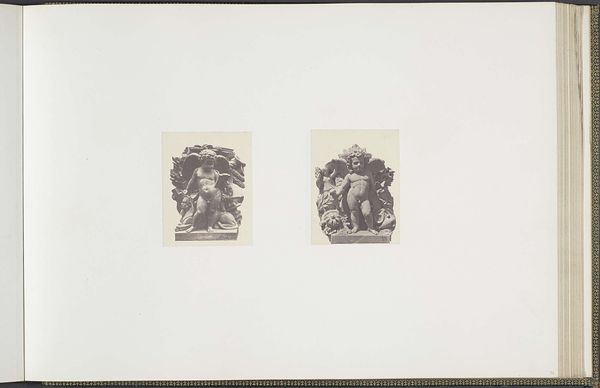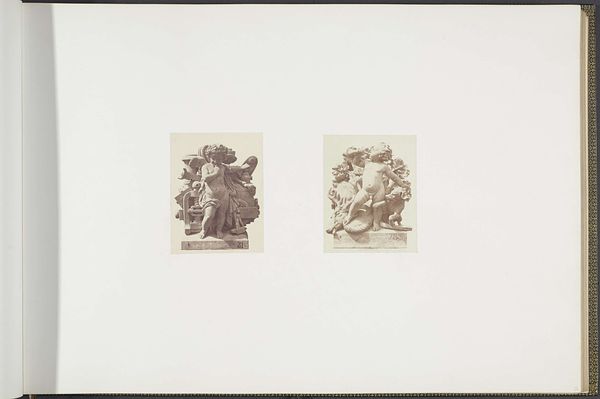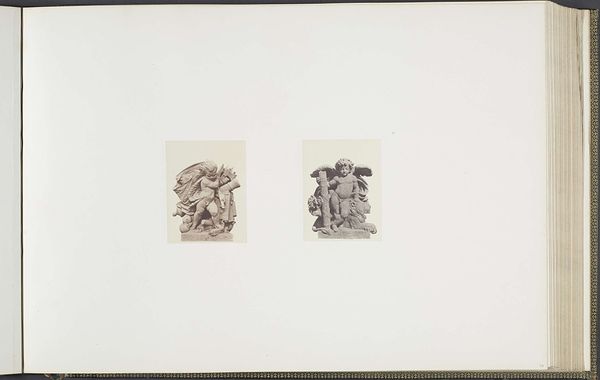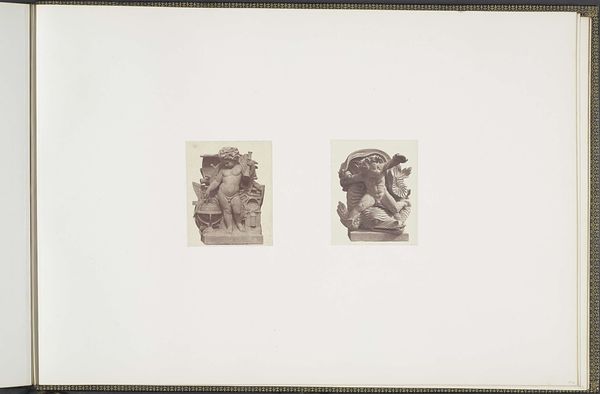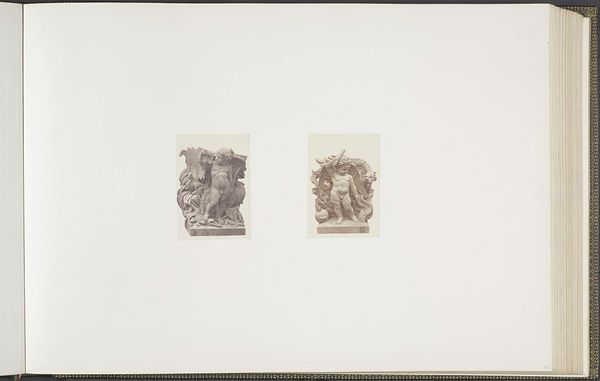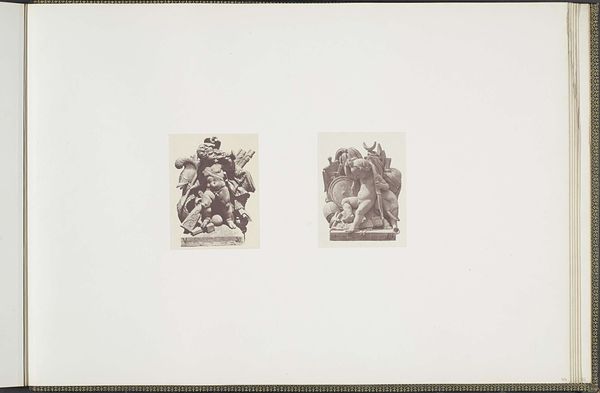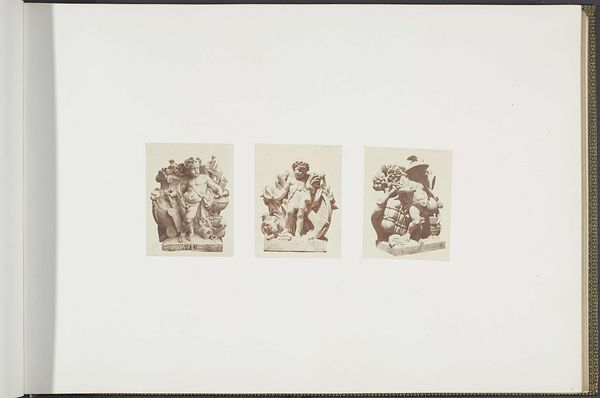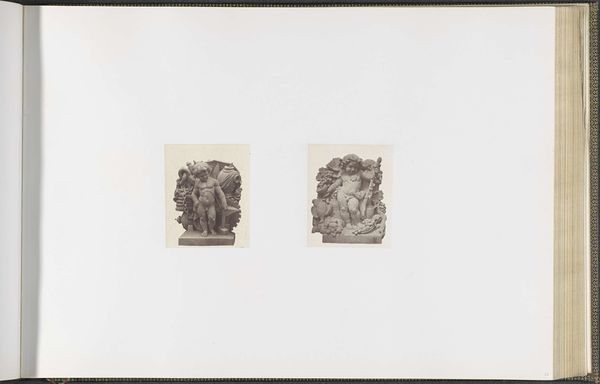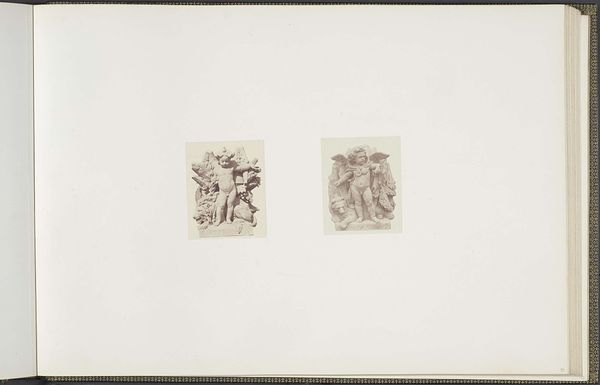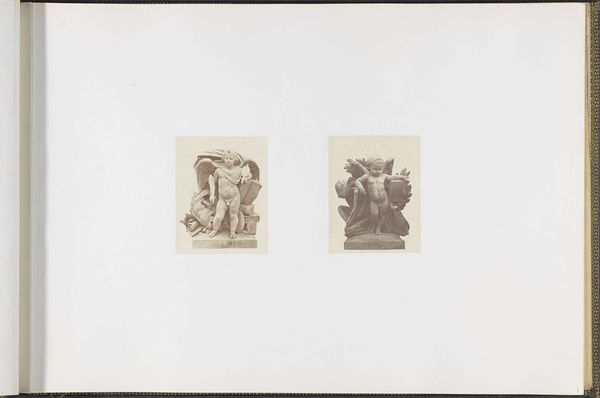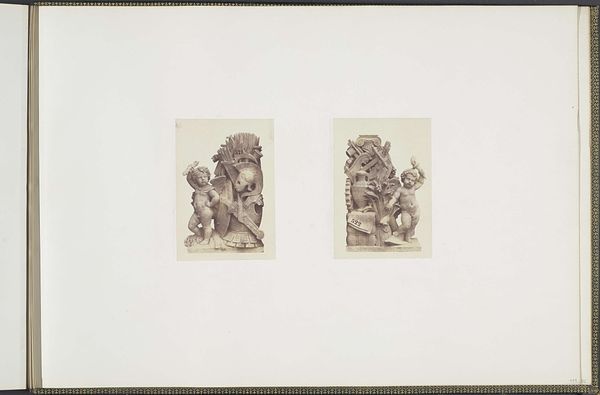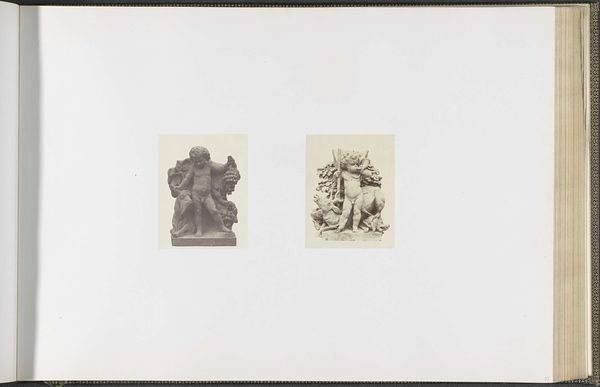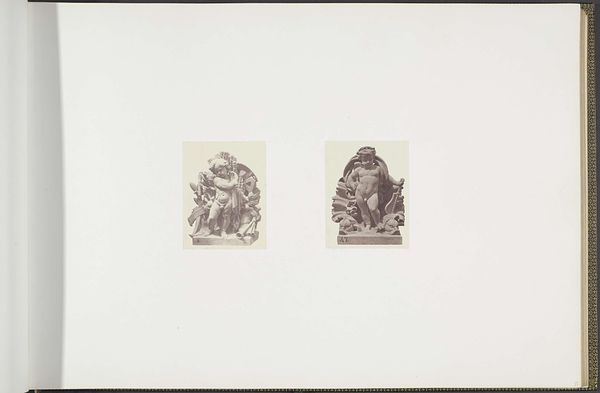
Gipsmodellen voor beeldhouwwerken op het Palais du Louvre: links "La Musique" door Elias Robert en rechts "Les Beaux-Arts" door Henri-Charles Maniglier c. 1855 - 1857
0:00
0:00
edouardbaldus
Rijksmuseum
print, bronze, photography, sculpture
#
portrait
#
neoclacissism
# print
#
bronze
#
figuration
#
photography
#
sculpture
#
academic-art
Dimensions: height 382 mm, width 560 mm
Copyright: Rijks Museum: Open Domain
Edouard Baldus captured these plaster models for sculptures on the Palais du Louvre in this photograph. We see winged infants, symbols of innocence and divine inspiration, embodying "La Musique" and "Les Beaux-Arts". The infant figure, or putto, has roots stretching back to ancient Greece and Rome, where Eros and Cupid embodied love and desire. In Renaissance art, these figures, often seen in tombs, were reborn as symbols of spiritual love, appearing in the heavens, surrounding sacred figures, and conveying emotional intensity. Consider Donatello’s playful putti dancing around pulpits or Raphael’s cherubic angels gazing down from the Sistine Madonna, they evoke a sense of timeless beauty and spiritual harmony. The motif transcends time, shifting from pagan love gods to Christian symbols of purity, reflecting the cyclical nature of cultural memory. These images tap into our collective subconscious, engaging viewers on a deep, emotional level. The enduring presence of the putto signifies a cultural continuity, evolving through history.
Comments
No comments
Be the first to comment and join the conversation on the ultimate creative platform.
